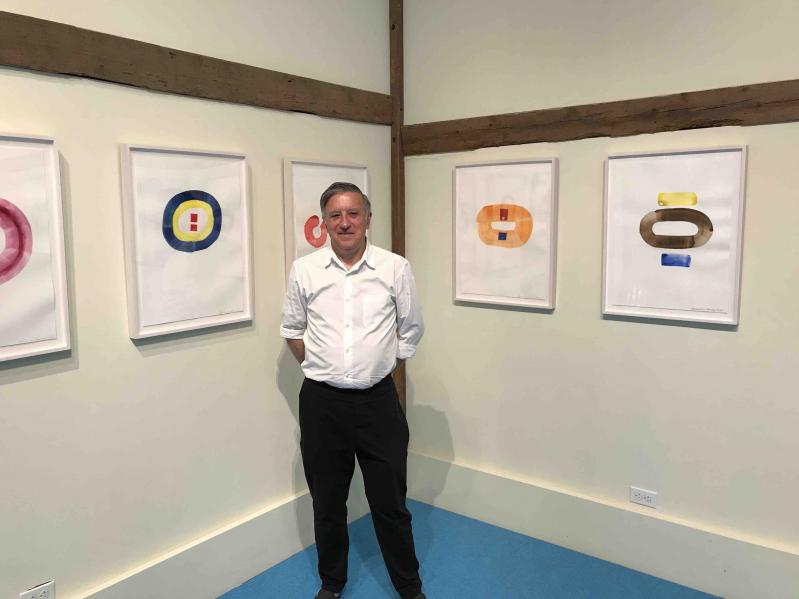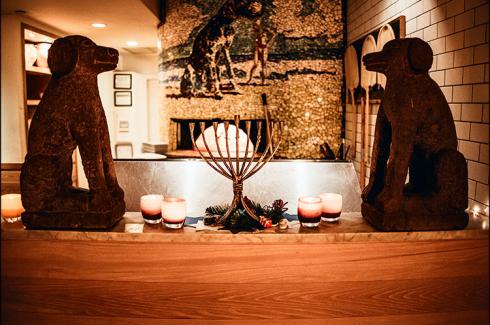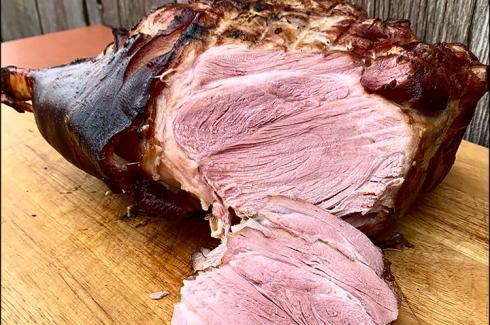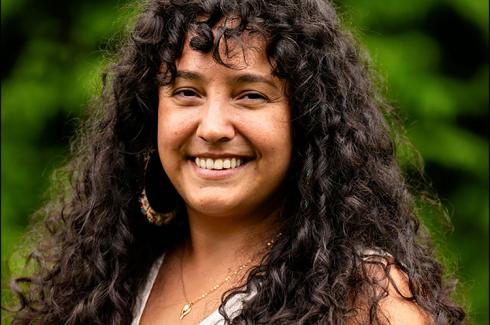Nicholas Howey was working for Robert Rauschenberg in the mid-1980s when he read about Collins and Milazzo, a pair of independent curators who together organized 44 exhibitions between 1984 and 1993 before they split up, personally and professionally. According to Artforum, the duo “permanently altered the nature of curatorial practice in the U.S.”
Mr. Howey decided to take a flyer and sent them his slides. A few days later, Tricia Collins called to speak to Rauschenberg. When Mr. Howey learned who was calling he mentioned having sent her some images. She said the name sounded familiar and that she would look at them.
Much later, he learned that she never looked at unsolicited slides. But he was in the right place at the right time. A few days after the call, Ms. Collins and Mr. Milazzo made a studio visit, and changed the course of Mr. Howey’s career. The curators were well connected in Europe, and multiple exhibitions of Mr. Howey’s work followed in Italy, the Netherlands, France, Denmark, and Belgium.
In connection with his first Italian solo show, his work appeared on the cover of Tema Celeste, an art magazine edited by the couple. “Had Tricia not called Bob, she might never have looked at the slides and the European exhibitions might never have happened,” Mr. Howey said.
Mr. Howey discussed his work recently in the summer studio at the Madoo Conservancy in Sagaponack, where “The Color of Science,” an exhibition of his watercolors, is on view through Saturday.
Born in DuBois, Pa., he attended the University of Pittsburgh, 100 miles from home, where he “tested the waters” by taking a course called Color. As the 16 watercolors at Madoo -- and his paintings -- attest, he never looked back. He earned a B.A. in studio art at Pitt, moved to New York, and graduated from N.Y.U. with an M.A. in 1974.
As an undergraduate, he focused primarily on printmaking, but began to paint as well after moving to the city. From the beginning, he worked abstractly.
Mr. Howey's first art-related “day job” was at the Dia Foundation space in Chelsea in 1982, where he worked on the production of performance pieces by Robert Whitman, who, along with Red Grooms, Allan Kaprow, Jim Dine, and Claes Oldenburg, had been among the first performance artists of the '60s. Away from the job he was always painting, and he had his first solo show in 1982 at the American Center in Belgrade, then the capital of Yugoslavia.
He was soon hired to run Rauschenberg's office, where he worked with David White, the artist’s curator. In 1986, Rauschenberg organized a show of Mr. Howey’s work at Edison College in Florida, and in the late '80s he began to work with Collins and Milazzo. "That’s when it came together for me,” he said.
His first solo show in Italy was at a gallery in Turin, which then connected him with many other galleries throughout the country. “It was fun,” he said, “and exciting to show in Europe, and the Italians are so mad about art.” But there was a caveat: “The Italians love what’s hip and happening, and after that’s over, they move on.” He did, too, to other venues in other countries.
By the early '90s Mr. Howey settled on a format that he has mined ever since: abstract images that float on a ground of pure color. “It is my own alphabet of new forms,” he has said. Before beginning a new series, he would choose a specific color for the background of the entire series. Early on, he often used his hands instead of brushes.
Mr. Howey doesn’t make studies. “I wouldn’t think about [a painting] a lot before I did it, it was just an emotional reaction to whatever was going on in my life.” Some of his abstract shapes are geometric, others irregular, and circles are often paired with squares, rectangles, or other circles. Some art critics have likened his forms to hieroglyphic symbols -- perhaps too often, judging from his amused reaction to that observation.
The artist did create a series of small watercolors many years ago, but abandoned that medium until embarking on the works now on view at Madoo. The backgrounds of his paintings are monochromes with no gradation, but “with watercolors, it was the reverse. There is no background color.”
With watercolor, “you can’t control what’s going to happen 100 percent, so it’s kind of a surprise. And you can’t erase or paint over it. I liked that about it. I was having so much fun I didn’t want to stop.” He set a goal of 108 watercolors, explaining that he does yoga and that is an important number in Hinduism and Buddhism, and surpassed it.
While his paintings are flat, the watercolor paper naturally buckles, drawing attention to itself as an object as well as a neutral (white)ground. Mr. Howey used some acrylic in the current series, he said, “just for an accent, because it’s denser than watercolor.”
Mr. Howey first came to the East End in the early 1980s because Mr. White, who is now senior curator at the Robert Rauschenberg Foundation, had a house in Springs. Afterward, he and his husband, Gerard Widdershoven, rented near Hudson, N.Y. for several years before deciding they wanted to be near the beach. They sold their townhouse in the city but kept an apartment there, and moved to Bridgehampton in 2009.
Chance provided another opportunity not long after. At a dinner party in Springs, Mr. Howey gave a small painting to the host as a gift. Jess Frost, the founder and executive director of the Arts Center at Duck Creek, was at the time organizing exhibitions for the Silas Marder Gallery in Bridgehampton. In the middle of the dinner, when the host unwrapped the painting, Ms. Frost said to Mr. Howey, “Oh, you can paint!”
Still mid-dinner, she announced she had to go out to her car. She returned with three small blank canvases and asked Mr. Howey to paint something on them and bring them to the gallery. They have been friends ever since.
Mr. Widdershoven, the founder of the Maison Gerard Gallery, died last June. The couple had been together for 32 years.
The caption of the photograph has been modified from its print version, which listed the incorrect closing day for the exhibition at Madoo.




